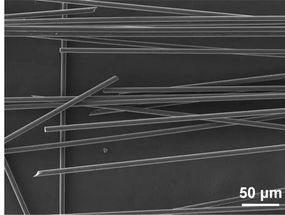Cepheid Issued MEMS Patent on Multi-Target Chip Technology
Cepheid announced that it has been issued an U.S. "Device Incorporating a Microfluidic Chip for Separating Analyte from a Sample." This patent covers the design of a sample preparation cartridge containing a microfluidic chip for extraction and purification of multiple DNA targets simultaneously. The potential benefit of this technology is that it may enable the integration of Cepheid's automated cartridge sample preparation capability with a high number of genetic targets, with improved nucleic acid capture and concentration efficiency, using solid-state components.
"This microfluidic technology is one of the first to enable sample preparation, particularly the capture and concentration of nucleic acids from raw biological samples, on a silicon chip," said Kurt Petersen, PhD, Cepheid's President and Chief Technical Officer. "We have not used this principle in any products to date, primarily because it was too expensive to produce. However, because of the decreasing price of MEMS (micro-electro-mechanical systems) silicon manufacturing, I could easily envision this great technology being in a product in the not too distant future. This may represent Cepheid's next generation technology precisely because it exhibits improved performance over conventional bead and resin-based capture and concentration techniques and may give us the ability to essentially integrate a microarray into our test cartridge. Such micro-chips are important elements in our micro- fluidic technology portfolio."
The technology covered by Cepheid's newest patent enables the development of a microfluidic chip that has an array of high-aspect ratio microstructures (sometimes referred to as "pillars"), providing a large surface area for the capture and concentration of an analyte. In use, a sample containing nucleic acid is forced to flow through a cartridge that contains the extraction chip so that the analyte in the sample binds to the pillars while unwanted sample components flow through the chip and into waste. After optional washing steps, the desired target analyte bound to the pillars is eluted in substantially purer and more concentrated form.
In total, Cepheid's intellectual property portfolio presently includes 18 issued and allowed U.S. patents covering various aspects of its instrument, test cartridge and assay technologies, with 31 U.S. patents pending.
Most read news
Organizations
Other news from the department business & finance

Get the life science industry in your inbox
By submitting this form you agree that LUMITOS AG will send you the newsletter(s) selected above by email. Your data will not be passed on to third parties. Your data will be stored and processed in accordance with our data protection regulations. LUMITOS may contact you by email for the purpose of advertising or market and opinion surveys. You can revoke your consent at any time without giving reasons to LUMITOS AG, Ernst-Augustin-Str. 2, 12489 Berlin, Germany or by e-mail at revoke@lumitos.com with effect for the future. In addition, each email contains a link to unsubscribe from the corresponding newsletter.




















































